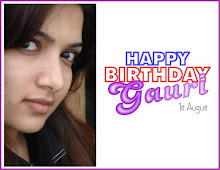
Radha and Krishna are one, yet They have assumed two separate forms to enjoy loving pastimes. Numerous theological texts explain how this is so, but most thorough are the writings of Krishnadasa Kaviraja Gosvami and Rupa Gosvami, great masters in the Vaishnava tradition whose books have been translated and commented upon by His Divine Grace A. C. Bhaktivedanta Swami Prabhupada. To understand Sri Radha, then, English readers would do well to turn to Srila Prabhupada's books.
Her Divine Pastimes
How does Radha's story unfold in the world of three dimensions? Though there are many versions of this story, the most gripping is found in the Padma Purana (Patala-khanda, Chapter 71): Early one morning, in the country atmosphere of Vraja (ninety miles south of present-day Delhi) some fifty centuries ago, Vrishabhanu Maharaja was taking his morning bath in the holy Yamuna River. Just then, a beautiful baby girl floated by, lying on a radiant and fully blossomed lotus. With intense glee, he embraced the divine infant and carried Her off to his queen, Kirtida Devi.
When Kirtida saw her husband with this magnificent child, she ran over and showered little Radha with unrelenting affection.
But the king and queen quickly noticed that the baby's eyes did not open. This naturally broke their hearts, and they prayed that God might bless Her with the power of sight.
Soon, Nanda Maharaja's wife, Yashoda Devi, arrived from Gokula, holding young Sri Krishna in her arms. Vrishabhanu and Kirtida, now the parents of Sri Radha, greeted her with due honor, but Yashoda could not take her eyes off the newborn baby girl resting in Kirtida Devi's arms.
Yashoda drew closer with baby Krishna, and as soon as Krishna came face to face with the baby girl, She opened Her eyes for the first time. Appropriately, Her first sight was the moonlike face of Her beloved Sri Krishna, and She paused as She gazed upon His lovely form. Krishna too was overwhelmed with love as He saw before Him His eternal consort, in the guise of a baby.
In this way, the scriptures relate how the eternal divine couple go about "meeting" each other as They appear, time and again, in the material world. As They "grow in years," They play with loving friends, swim in the Yamuna, graze their cows, and relish each other's loving embrace. Sacred texts and the realizations of the sages elaborate on the details, establishing narratives that serve as virtual magnets, attracting all who hear them back to the spiritual realm.
The Circle Dance of Love
Of all such narratives, the rasa-lila, the circular dance of love described in the Srimad-Bhagavatam, is in many ways the most important.
The divine dance takes place one moonlit autumn night when the cowherd maidens (gopis) of Vrindavana, upon hearing the sound of Krishna's flute, sneak away from their families to be with Him. The rasa-lila is considered one of the highest and most esoteric of Krishna's revealed pastimes, and it should never be confused with mundane pastimes of prurient interest. Accordingly, Vaishnava commentators make one thing perfectly clear: romantic love between human beings is a diminished, compromised reflection of the soul's original, ecstatic love for Krishna, God, in the spiritual world. Studying the rasa-lila under a bona fide spiritual master allows one to realize this as a tangible truth. It also allows one to develop love for God, just as the gopis do in their dance of love.
Radha's Mercy
Radha is Krishna's mercy incarnation, and through Her one can attain the culmination of the spiritual pursuit. Srila Prabhupada sums this up as follows:
"Radharani, You are so dear to Krishna. So we offer our respectful obeisances unto You." Radharani is hari-priya: "very dear to Krishna." Through the mercy of Radharani we can easily approach Krishna. If Radharani recommends, "This devotee is very nice," then Krishna immediately accepts me, however great a fool I may be. Because I am recommended by Radharani, Krishna accepts me. Therefore in Vrindavana you'll find all the devotees chanting Radharani's name more than Krishna's. Wherever you'll go, you'll find the devotees greeting one another, "Jaya Radhe!" You'll find this still in Vrindavana. The devotees are glorifying Radharani.If you go by the speculative process to understand Krishna, it will take many, many lives. But if you take to devotional service and just try to please Radharani, Krishna will be gotten very easily. Radharani can deliver Krishna. She is so great a devotee, the emblem of maha-bhagavata. Even Krishna cannot understand the quality of Radharani's devotion. Although Krishna says vedaham samatitani-"I know everything"-He fails to understand Radharani. She is so great.
It is in pursuit of these truths that Radha and Krishna descend as Sri Chaitanya Mahaprabhu, for in that form They taste the highest mercy and bestow it on others. The chief manifestation of that mercy is the holy name in the form of the maha-mantra: Hare Krishna, Hare Krishna, Krishna Krishna, Hare Hare/ Hare Rama, Hare Rama, Rama Rama, Hare Hare.
In this mantra both Radha and Krishna are fully manifest. A prayer to Sri Radha (Hare is the vocative form of Hara, another name for Radharani), it beseeches Krishna to be engaged in devotional service, the highest form of yoga. Radha is the medium through which such service is enacted, for She is the embodiment of devotion, the essence of love for Krishna.



No comments:
Post a Comment